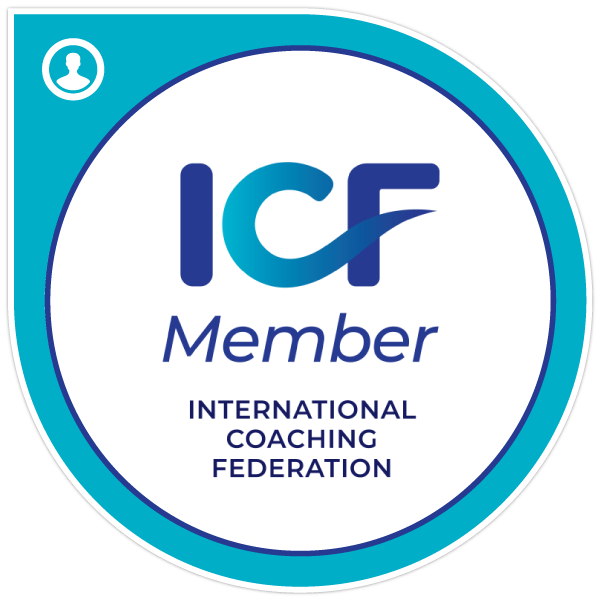Being Tough in Hard Times
Rich Baron • October 16, 2023
Do you have the mindset to be a tough leader?
CEOs, the rest of the C-suite, HR, and middle management have their work cut out for them in the future. If the pandemic, Great Resignation, and the economy have taught us anything, it should be that the disruption in corporate America remains as present as ever. A myriad of issues continues to circulate, presenting a rogue’s gallery of challenges for every company and organization. The “New Normal,” a mantra we hoped would be transitory in nature, is now a permanent enshrinement. The challenges of the past four years have never left and in many cases, have compounded in nature. You can adjust accordingly, provided leadership is willing to take actionable steps. After all, 75% of all companies that fail can be traced directly to poor, unprepared leadership.
The business challenges we now face have strained some businesses past the breaking point. It has subjected leaders to unprecedented pressure and pushed some into survival mode. Headwinds of accelerating disruption and an ever-faster-changing business landscape challenge leaders and businesses alike. However, difficult situations can bring out the best in some leaders. It can also bring out the worst. Tough times separate those leaders who have the skills and talents necessary to bring their organizations through hard times. It will also highlight the lack of leadership skills and painfully pull back the curtain on the imposters.
While many of us might think of ‘tough leaders’ as those bosses who worked us to the bone, avoided personal relationships, or maybe threatened our existence within the organization, executive coaching views "toughness" differently. This is because the truly "tough" leaders aren’t those who berate employees or manage through fear. Instead, they’re the leaders who truly face the toughest leadership challenges head-on while keeping their employees engaged and focused on the vision and overall success of the organization.
Here are some tips that could help your organization, and leaders stay tough and on track in the coming years.
Culture is the Key
So, let's start by stating the most important fact about organizational culture, "Your company culture starts from the top. It starts with the CEO first and foremost. You can't fake a company culture if the CEO doesn't live by the core values of the organization." That includes being able to lead through tough times without cracking.
Senior leadership, especially the CEO, must internalize the most important effect their leadership has on the culture of their organizations. They are the stewards of the organizational culture, whether they like it or not. If the CEO is not prepared for tough times, neither will the organization be.
It seems like everyone we talk to will say something about the culture of their organizations. In most instances, the comments are positive. However, if this were true, why is then that 75% of business transformations flat-out fail, resulting in an organization’s decline, failure, or eventual extinction? A big reason for their failure? CEOs and senior leadership teams were not as tough as they needed to be in order to pivot their organizations during challenging times.
Tough Leaders Needed
“You never know how strong you are until being strong is your only choice.”- Bob Marley
When the going gets tough, the tough get going – they say. But how can leaders stay tough when all circumstances seem to turn against them? After all, tough times can challenge our concept of who we are personally. It can make us doubt our own choices and challenge our confidence as leaders. However, this is what separates tough leaders from their not-so-tough counterparts. Tough-minded leaders have confidence in themselves and a strong sense of objectivity. They know that tough times are inevitable, and they have prepared themselves, and their organizations in advance for when those situations emerge. Being prepared both personally, and as a leader of your organization will alleviate the fear and uncertainty that hard times create. And if you think as a leader you will spared from tough times, think again.
Leadership coaching understands that troubling times always carry opportunities. Leadership coaching can help leaders develop mindsets that allow them to remain flexible, tough, and effective during troubling times. Spotting opportunity amid adversity is a leadership ability that can help leaders prevail in the face of disruption.
Avoid the Comfort Zone
Ah, the dreaded comfort zone. The comfort zone is a real and critical danger for leaders and businesses alike. A comfort zone is a place of safety, certainty, and predictability. We all love it. Nature has programmed us to appreciate the facilities of the comfort zone and value them, often above everything else. And the confirmation bias that an oversized corporate ego can create may facilitate a tendency to get stuck in it.
Whatever lies outside our comfort zones entails danger, uncertainty, and risk. When we venture into this area, we become vulnerable. But leadership vulnerability is far from being a bad thing. It is an opportunity for intelligent leaders to lead by example and inspire others. Leaders who embrace their vulnerability will be able to retain their humanity and humility during disruption and will not find it difficult to stay tough in troubling times. Some attributes of leaders who can successfully face tough times are as follows:
• Any time a tough leader realizes they’re in a comfort zone, they force themselves out.
• They understand that change is necessary.
• They understand new perceptions are necessary.
• They understand that "comfort" is just another way of saying "stagnancy."
Executive coaching understands that leaders who want to retain their toughness in troubling times must force themselves to leave their comfort zones. It takes courage to leave certainty and safety behind, but it also takes humility and a clear head to lead organizations through troubling times.
Always be Transparent
Tough leaders need to occasionally have tough conversations. And, while some news might be difficult to deliver, the best leaders approach these conversations swiftly, straightforwardly, and with an underlying sense of kindness and empathy. However, times of crisis may tempt the not-so-tough leaders to give up some transparency and focus on “just getting things done.” The problem here is that a lack of personal clarity due to fear of the unknown can mean doing what seems familiar, and not the right path forward. More specifically, some leaders may shy away from clearly communicating unpopular strategies and plans because they have never been transparent before.
People always appreciate clarity amid strife. Transparency and honesty always translate to trust and caring. Transparency allows people to know what’s on their leader’s mind. And caring lets them know what’s in the leader’s heart. During times of crisis, honesty and transparency are not luxuries to sideline or sacrifice on the altar of practicality.
“Honesty doesn’t always pay, but dishonesty always costs.” – Michael Josephson.
Appreciation is Priceless
Tough leaders also know that they will never make it alone. Being a champion of appreciation might not be the first thing that comes to mind when you think about tough leadership. However, great leaders understand that appreciation is one of the most important things a leader can do. Becoming vulnerable to someone else’s greatness, and your own gratitude to have them on your team will speak volumes about your abilities as a leader to guide them through the challenges that are certain to come your way. After all, those people you choose to surround yourself with will follow you through tough times and become your greatest ally if they know that they are a valuable, appreciated part of the team. Never forget to give credit where credit is due.
Wrapping Up
Let's face it, being in a leadership position is not for the faint of heart. There will be times when you are faced with challenges that can be overwhelming if you are not prepared to square up your shoulders and face these situations head-on. The frightening truth is that surveys and reports show that 75% of all global leaders are not prepared for the business challenges of the future. Even more concerning is how many of those leaders are not aware that they are not prepared to successfully weather the storm.
If you feel that your leadership skills are inadequate to face the future challenges that are coming, reach out to me here
to have a discussion on how I can help prepare you to become a tough leader.
You can read the testimonials
of those leaders who worked with us to gain the confidence and mindsets to successfully lead their teams during tough times.
About the Author
Rich Baron serves as the Chief Operating Officer and Director of the Global Coaching Project at John Mattone Global, where he also holds the title of Master Certified Intelligent Leadership Executive Coach. With over 30 years of rich experience in cultural transformation, operational leadership, executive roles, and coaching leaders at every level—from emerging talents to seasoned CEOs—Rich has a demonstrated track record of success.
Rich co-hosts "Mainline Executive Coaching ACT," a podcast that is recognized by Feedspot as the leading Executive Coaching Podcast worldwide. The podcast's acclaim is based on an evaluation of numerous factors, including web traffic, social media followers, and timeliness. It boasts an impressive following in more than 85 countries and over 850 cities globally.




